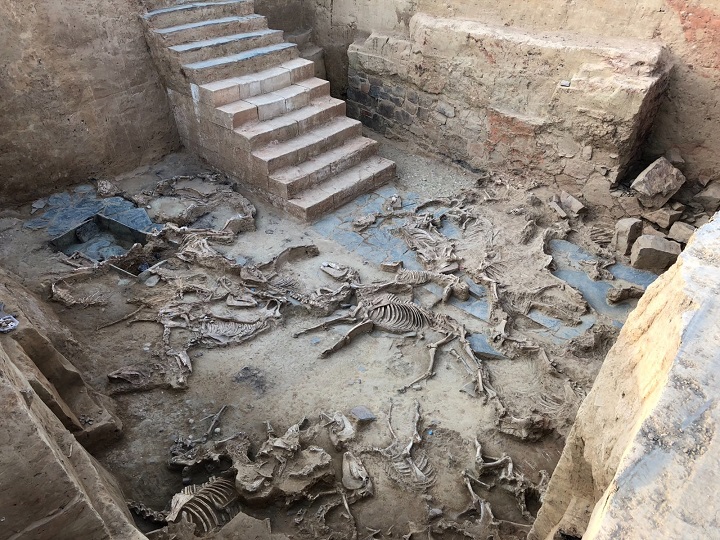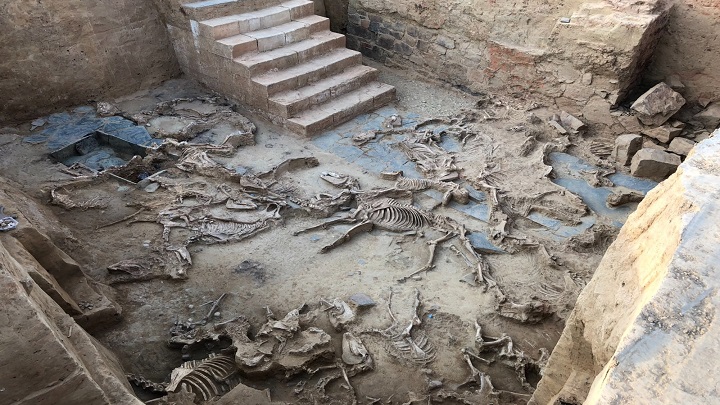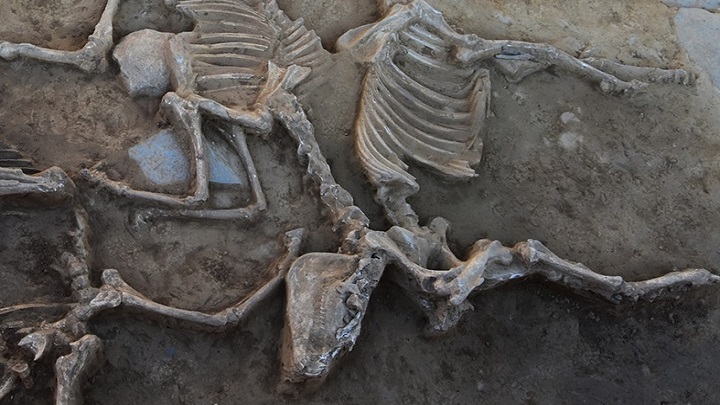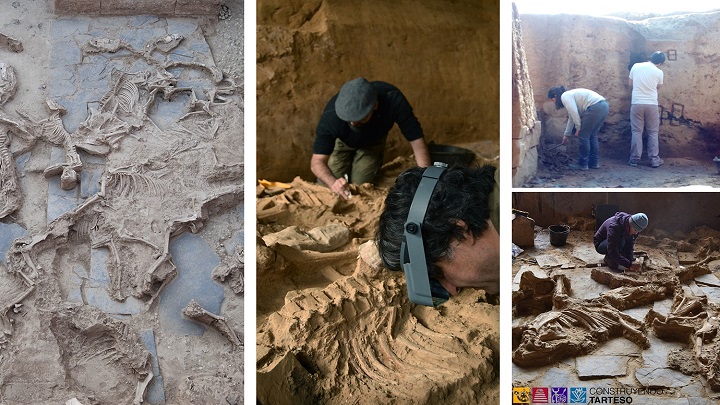Mass animal sacrifice in Iron Age western Mediterranean

The largest mass animal sacrifice in the western Mediterranean during the first Iron Age took place in the Casas del Turuñuelo site, in Badajoz (Spain), a site which is providing with a new archaeological view of the Tartessian culture. The specific analyses of the bone remains from 52 animals — 6 cattle, 4 pigs, 1 dog and 41 equids — show that the animal sacrifice was part of some rituals that date back to the 5th century BCE. These findings are now published in an article in the journal PLOS ONE. One of the main authors is Silvia Albizuri, member of the Institute of Archaeology (IUAB) and the Seminar for Prehistoric Studies and Research (SERP) of the University of Barcelona.

The largest mass animal sacrifice in the western Mediterranean during the first Iron Age took place in the Casas del Turuñuelo site, in Badajoz (Spain), a site which is providing with a new archaeological view of the Tartessian culture. The specific analyses of the bone remains from 52 animals — 6 cattle, 4 pigs, 1 dog and 41 equids — show that the animal sacrifice was part of some rituals that date back to the 5th century BCE. These findings are now published in an article in the journal PLOS ONE. One of the main authors is Silvia Albizuri, member of the Institute of Archaeology (IUAB) and the Seminar for Prehistoric Studies and Research (SERP) of the University of Barcelona.
This international study includes the participation of members of the Valencian Institute for Conservation, Restoration of Cultural Heritage (IVCR+i); the University Institute for Research on Iberian Archaeology of the University of Jaén; the Archaeology Institute of Mérida (IAM-CSIC); University of Extremadura (UEX); University of Córdova (UCO); University of Lleida; Milà i Fontanals Institution (CSIC-IMF), and the Centre for Anthropobiology and Genomics of Toulouse (France), among others.
Tartessian rituals and animal sacrifice
About 2,500 years ago, a Tartessian community settled in the basin of the Guadiana River carried out a unique ritual in one of their most impressive buildings. When they finished, they covered the building with sediment from the river and created an artificial monument six metres high and 90 meters in diameter, which they finally abandoned. The excavations at the Casas del Turuñuelo site — one of the most impressive sites in peninsular archaeology — are co-led by Sebastián Celestino Pérez and Esther Rodríguez González (IAM-CSIC).
Animal remains were arranged in the courtyard of the building in three sequential phases, according to the results of taphonomy, microstratigraphic evaluations and a series of radiocarbon datings. In addition, there have been indications of offerings of burnt vegetables and objects associated with symbolic activities, such as sheepfolds. The arrangement of the animal corpses suggests an intentionality in the display and staging of the sacrifices.
Evidence suggests that the animals were killed in the context of ritual sacrifice. In the earliest phase, the animals show signs of having been left partially uncovered as scavengers modified their bones. In the second and third phases, the skeletons are complete and anatomically connected, suggesting rapid burial. In the last phase, everything indicates that the bodies of two equids were deposited with the remains of a feast that included bovine and porcine meat, according to the experts M. Pilar Iborra (IVCR+i) and Silvia Albizuri (SERP- UB), who led the research and who had been linked to the IAM-CSIC.
The study also highlights the prominence of equids in these animal sacrifices, which is evidence of the importance of these species (horses, donkeys and their hybrids) in the economic systems and culture of Iron Age communities.
Reference article:
Iborra Eres, M. P.; Alziburi, S. et al. «Mass Animal Sacrifice at Casas del Turuñuelo (Guareña, Spain): a Unique Tartessian (Iron Age) Site in the Southwest of the Iberian Peninsula». PLOS ONE, November 2023. DOI: 10.1371/journal.pone.0293654.
Multimedia gallery



